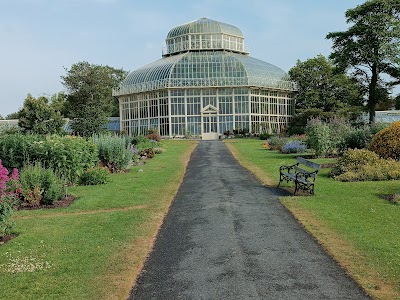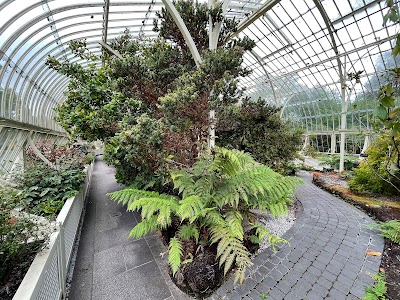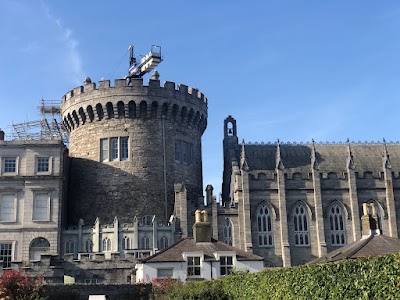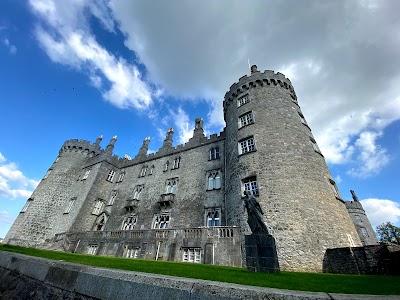The National Botanic Gardens (Na Gairdíní Bóthar Náisiúnta)
Overview
The National Botanic Gardens, a lush oasis of tranquility and natural beauty, are nestled in Glasnevin, a charming suburb of Dublin, the capital city of Ireland. As one of the country’s premier horticultural sites, these gardens are a must-visit destination for tourists seeking a peaceful retreat into nature, an educational experience, or an opportunity to marvel at botanical wonders from around the globe.
Rich History
Established in 1795 by the Dublin Society, which later evolved into the Royal Dublin Society, the National Botanic Gardens reflect Ireland's long-standing commitment to the study and appreciation of plant life. Initially conceived as a scientific endeavor to advance agriculture and improve plant cultivation, the gardens quickly transformed into a center of botanical research and conservation that has significantly enriched our understanding of diverse plant species.
Stunning Landscapes
Spanning an impressive 48 acres, the gardens are celebrated for their meticulously maintained grounds and diverse plant collections, which include iconic Victorian glasshouses. Visitors are particularly drawn to the Palm House and the Curvilinear Range, both architectural masterpieces. The Palm House, built in the mid-19th century, is a vast iron-and-glass structure that houses a variety of tropical and subtropical plants, creating a lush paradise teeming with exotic life. Similarly, the Curvilinear Range, designed by Richard Turner, boasts an elegant serpentine design that showcases an array of temperate plants.
Conservation and Research
The National Botanic Gardens play a vital role in plant conservation and research, making them significant both scientifically and environmentally. The gardens are active participants in various international initiatives aimed at preserving rare and endangered plant species. Their commitment is evident in the Seed Bank, where seeds of numerous unique and threatened plants are stored as a genetic reservoir for future generations.
Educational Opportunities
In addition to their scientific endeavors, the gardens serve as an invaluable educational resource for the public. They host regular tours, workshops, and exhibitions that offer insights into botany, horticulture, and the environmental challenges our planet faces. For those eager to delve deeper, the gardens’ library houses a wealth of botanical literature, accessible to researchers and the general public alike.
Recreation and Leisure
The gardens are not just a hub for learning; they also provide a delightful space for leisure and recreation. Meandering paths guide visitors through a variety of themed gardens, including the Rose Garden, Rock Garden, and the vibrant Herbaceous Border. Seasonal displays ensure that the gardens are a visual and olfactory delight year-round, with the Cherry Blossom Avenue drawing crowds in spring when the trees burst into delicate pink blooms.
Art and Culture
Art and culture harmoniously intertwine with nature within the gardens. Throughout the year, the gardens serve as an inspiring backdrop for numerous art installations and cultural events. Sculptures dot the landscape, creating a dialogue between the natural and the man-made. Additionally, the visitor center occasionally hosts exhibitions that blend art with botanical themes, offering a multidisciplinary experience.
Historical Context
Another fascinating aspect of the National Botanic Gardens is its proximity to Glasnevin Cemetery, which lies adjacent to the gardens. This historic cemetery is the final resting place of many notable Irish figures, providing visitors the opportunity to explore this neighboring site and adding a layer of historical and cultural depth to their visit.
Dining and Accessibility
For those who work up an appetite, the Garden Tearooms offer a cozy spot to relax and enjoy a range of refreshments. Nestled within the gardens, this café provides a selection of locally sourced foods, ensuring a pleasant end to a leisurely stroll around the grounds. Accessibility is a priority at the National Botanic Gardens, designed thoughtfully to accommodate visitors of all abilities, with clear pathways, ample seating, and accessible facilities. The gardens are also family-friendly, featuring interactive educational activities that engage children and make learning about plants an adventure.
In conclusion, the National Botanic Gardens in Leinster, Ireland, offer a unique blend of natural splendor, historical significance, and scientific importance. Whether you're a plant enthusiast, a history buff, or simply seeking a peaceful escape, the gardens promise a fulfilling and memorable experience. Their well-maintained landscapes, diverse plant collections, and dedication to education and conservation make them a true gem of Ireland, inviting visitors from around the world to immerse themselves in the rich tapestry of Ireland’s natural heritage.







